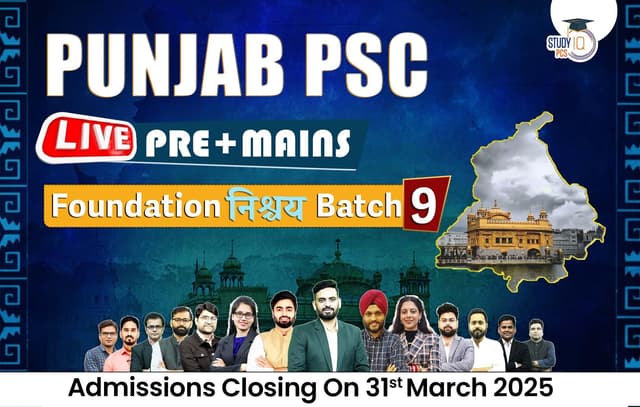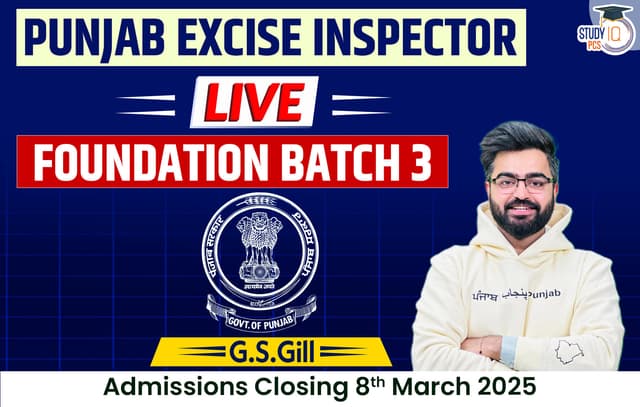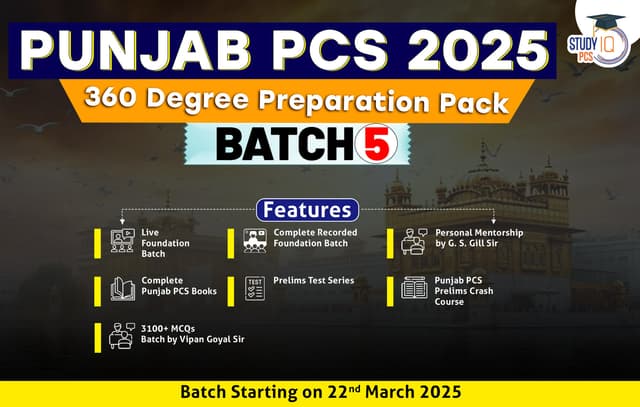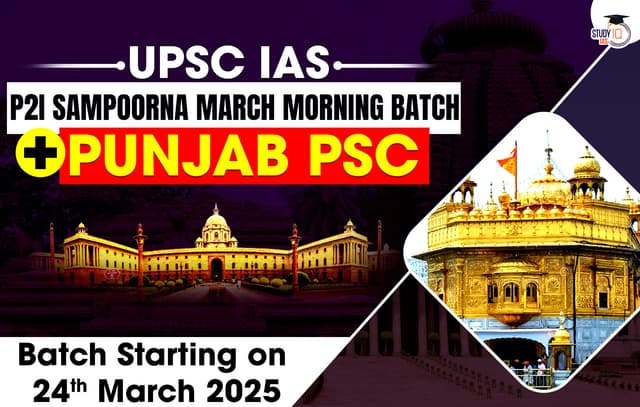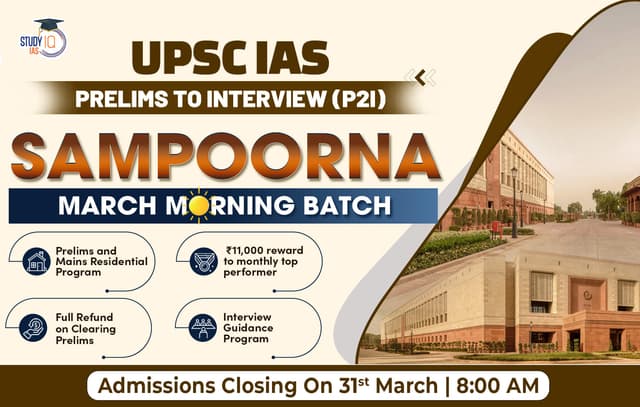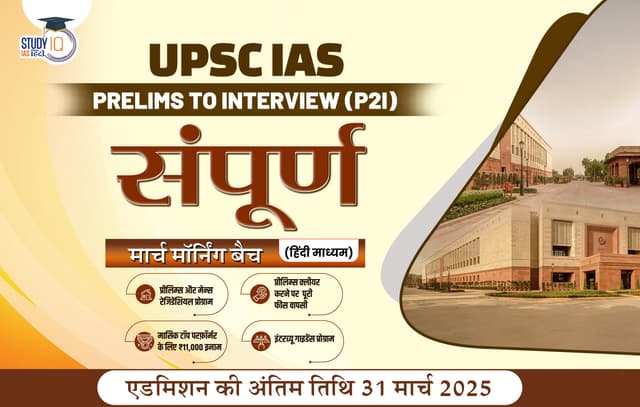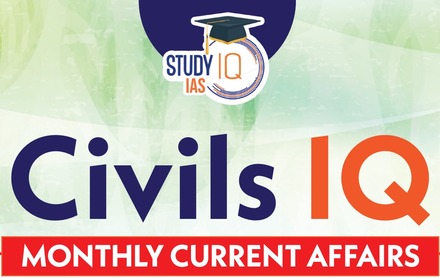Table of Contents
- The constitution of India envisages the establishment of a new social order based on equality, freedom, justice, and dignity of the individual. It aims at the elimination of poverty, ignorance, and ill-health and directs the State concerning raising the level of nutrition and the standard of living of the people, securing the health and strength of workers, men, and women, and especially ensuring that children are given opportunities to develop healthily.
- The Health and Family Welfare Department of Punjab is committed to providing preventive, promotive and curative Health Services to the people of the State through a good network of medical institutions such as sub-centers, Subsidiary health centers (SHCs) covering Dispensaries/Clinics, etc., Primary Health Centers (PHCs), Community Health Centers (CHCs), Sub-Divisional and District Hospitals, Government Medical & Dental Colleges (attached hospitals).
- Along with the above infrastructure, Punjab Govt has set up mohalla clinics in Punjab in order to provide health facilities at grassroot level.
Primary Health Care System
- Primary Health Care Services in the rural areas of the State are provided through a network of Medical Institutions comprising Sub-Centers for approximately 5,000 population, SHCs for approximately 10,000 population, PHCs for approximately 30,000 population, and CHCs for approximately 1 Lac population.
- For the promotion of Indian Systems of Medicine & Homeopathy (AYUSH), Ayurvedic/ Unani dispensaries, Ayurvedic Swasth Kendra, Ayurvedic Hospitals, one Government Ayurvedic college at Patiala and Homeopathic dispensaries are functioning in the State.
Secondary Health Care System
- While the CHCs established in rural areas serve as the first level of referral services, the Hospitals at Sub-Divisional level and District Hospitals serve as a secondary level of the health care system giving support to the services being provided in the Primary Health Care System.
- Hospital Services at the secondary level play a vital and complementary role to the Primary Health Care System and together form a comprehensive district-based health care system.
Tertiary Health Care System
- Tertiary level health care services are provided in the State by the specialized hospitals and hospitals attached to State Medical Colleges. These institutions, besides providing support to the secondary level health care system, are expected to carry out research and manpower development for the health services of the State.
Indices in Healthcare of Punjab
- Healthcare is one of the factors that directly impact the quality of life and human development status of any economy. SDG’ 3.0 aims at ensuring healthy lives and promoting well-being for all at all ages. The Punjab government has been a front runner with regards to the State’s performance on health indicators. This aspect of the index measures various child and mother health care indicators, and the availability of health infrastructure.
Punjab’s performance on key health outcomes
Life Expectancy
- Life expectancy is the most important yardstick to judge the quality and well-being of the people. Life expectancy, at birth, in Punjab has improved by over 2 years between 2010-14 and 2016-20 from 69.7 to 70.8 years (for males). In line with the national trends, female life expectancy (74.5 years) is higher than male life expectancy (70.8 years) for the period 2016-20.
- The State has consistently performed better than the national level on life expectancy indicators, given the relatively higher per-capita income in the state allowing people to be able to provide for their healthcare needs.
Child Health
- Punjab’s strong performance in life expectancy is in tandem with the State’s performance on child well-being indicators. Punjab continues to have a significantly lower Infant Mortality Rate (IMR) and Under 5 Mortality Rate (USMR), in comparison to the national averages.
- As per NFHS 2019-21, the IMR and USMR in Punjab stood at 28.0 and 32.7 per thousand live births respectively in comparison to 35.2 and 41.9 respectively at the national level.
- Immunization is essential for ensuring a healthy life for children and bringing down child mortality rates. Punjab has made significant progress in ensuring immunization of children in the State. The proportion of children aged 12 to 23 months who did not receive any vaccination fell to 3.7% in 2019-21 from 6.6% in 2005-06.
- The full immunization coverage in the State has also witnessed a significant improvement. The proportion of children (aged 12 to 23 months) which received all basic vaccinations (BCG, DPT, Hepatitis B and Polio), stood at 76% in 2019-21. In fact, Punjab has the 4th highest proportion of children with full basic vaccination coverage, amongst states. In the state not only more children are vaccinated, but they are vaccinated at the right time. 71% of the children received vaccination at appropriate ages in Punjab, against 56% at the national level.
Maternal Healthcare
- Punjab’s strong performance on child healthcare indicators is not reflected in the maternal healthcare indicators of the State. Maternal Mortality Rate (MMR) is the primary indicator of
health care facilities in any economy. The latest estimates for MMR, available for the period 2018-20, indicates that MMR in Punjab stands at 105 per lac live birth. MMR in Kerala (between 2018-20) stood at 19 per lac live births, the lowest across the country. This highlights that Punjab has scope to improve on the maternal health front.
- Punjab’s performance on providing antenatal care to expecting mothers is much better than the national average. The Pradhan Mantri Surikshit Matritva Abhiyan (PMSMA) is being implemented in the state to provide at least one antenatal checkup to all expectant mothers in the 2nd or 3rd trimester. It has helped various beneficiaries access such services which were earlier inaccessible.
Health Infrastructure
- Health infrastructure plays a key role in the provision of healthcare facilities in an economy. In terms of physical infrastructure, the population served per medical institution decreased to 6811 in 2023 against 8120 in 2022. Similarly, the population served per bed declined to 1561 in
2023, against 1591 in 2022. In sync with physical infrastructure, the population served per doctor has also improved over the years.
Aam Aadmi clinics (AACs)
- Government of Punjab has rolled down 664 Aam Aadmi Clinics (AACs) in the State in a phased manner. Out of these AACs, 236 AACs are located in the urban areas while 428 are located in the rural areas of the state. A total of 80 types of drugs are being provided at AACs. The medicines have been provided free of cost to the patients through these clinics.
Nutritional Status
Child Nutrition
- Poor child nutrition is a key challenge facing all developing economies. Poverty and lack of food security are two key reasons which have led to millions of children across the globe to be stunted, underweight, and wasted. SDG 1 and 2 aim at making the world poverty and hunger-free to ensure that children across the globe are free of the curse of malnutrition.
- Punjab’s performance on the three anthropometric indices (stunted, wasted and underweight, for children below the age of 5 years) is amongst the best across all states and significantly higher than the national average. Within the years between 2015-16 and 2019-21, the State has made great improvement in bringing children out of concerns of malnutrition, especially wasted. Punjab has also been successful in bringing down the incidence of anemia amongst children.
- The performance of Punjab in breast feeding is below the national trends. Among children born in the past two years, 92% were ever breast-fed, against 95.9% at national level.
Water Supply and Sanitation
- Clean Water and Sanitation (SDG 6), aims at ensuring availability and sustainable management of water and sanitation for all. Clean water supply and appropriate sanitation facilities are
imperative to ensure good health. The State has been successful in providing quality access to improved drinking water sources. Almost all households (98.8%) in Punjab have access to improved sources of drinking, as estimated by NFHS 2019-21. In comparison, at all-India level only 95.9% households have access to improved sources of drinking water.
- On the aspect of sanitation, Punjab is again amongst the front runners. 85.4% households in Punjab have a toilet, while only 69.3% of households at all India level do. Punjab is the fourth state to be declared open defecation free (in both rural and urban areas).
Various Government initiatives in Health sector
Integrated Disease Surveillance Programme (IDSP)
- IDSP was launched in Punjab in 2007 with an objective for early reporting of communicable diseases, their outbreak identification and effective timely response. The State has a network of State Surveillance Unit and District Surveillance Units in all 23 districts with identified 3046 sub centers (S-Form), 941 units in medical institutions (P-Form) and 767 laboratories (L-Form) as reporting units for disease surveillance.
Rashtriya Bal Swasthya Karyakram (RBSK)
- It is an initiative aiming at early identification & early intervention for children from birth to 18 years to cover 4 Ds (Defect at birth, Deficiencies, Diseases and Development Delays including disability) for some selected diseases. Children of Anganwadi Centres (6 weeks to 6 years) are examined twice a year by dedicated Mobile Health Teams while students of government schools (6 years to 18 years) are examined once a year. Any child suffering from any one of selected diseases is treated free of cost at all Government Hospitals.
Supplementary Nutrition Programme (50:50)
- Integrated Child Development Services (ICDS) Scheme is a Centrally Sponsored Scheme which is being implemented to provide a healthy diet to the needy children. It has been universalized in the State and is being implemented in 155 ICDS blocks. Under this scheme a well knitted network of 27314 Anganwadi Centres is operational in the State. The following six services are given to the children in the age group 6 months to 6 years and women in the age group 15 to 45 years at Anganwadi level:
- Supplementary Nutrition
- Immunization
- Health Check-up
- Nutrition and Health Education
- Referral Services
- Pre-School Education
Scheme for Adolescent Girls (SAG)
- This is the centrally sponsored scheme. It is being implemented by the Ministry of Women & Child Development in 6 districts namely Faridkot, Gurdaspur, Hoshiarpur, Jalandhar, Mansa and Patiala of Punjab State. This scheme has been reformulated by merging Kishori Shakti Yojana and Nutrition Programme for Adolescent Girls (NPAG).
Pradhan Mantri Matru Vandana Yojana (PMMVY) (60:40)
- This scheme was earlier known as Indira Gandhi Matrtava Sehyog Yojana, launched in two districts as a pilot project. However, it was revamped as PMMVY in 2018 and implemented in all districts of Punjab. The main objective of the scheme is to uplift the nutritional and health status of pregnant ladies and nursing mothers and infants. Under this scheme, the women of 20 years of age and above at the birth of first live child, will receive Rs. 5000/- in three installments.
Pradhan Mantri Surakshit Matritva Abhiyaan (PMSMA)
- Under the scheme, free antenatal checkup is given to pregnant women on the 9th of every month. This is to ensure that every pregnant woman receives at least one ANC in her second and third trimester by a specialist. In 2021, Extended PMSMA was implemented to increase ANC coverage and track all the high-risk pregnancies till their delivery.
POSHAN Abhiyaan (National Nutrition Mission) (NNM)
- In order to address malnutrition, GOI has approved the setting-up of National Nutrition Mission (NNM) and to roll it out in a phased manner with an aim to achieve improvement in nutritional status of children from 0-6 years, Pregnant Women and Lactating Mothers.
National Programme for Prevention and Control of Cancer, Diabetes, Cardiovascular Diseases & Stroke (NPCSCS)
- This Programme is being implemented for early diagnosis and treatment of four diseases i.e.
Cancer, Diabetes, Cardiovascular disease and Stroke. Some Projects of Punjab State are:
- Stroke Ready Units: 9 Stroke Ready Units for the primary treatment of Stroke patients have been established in 3 Government Medical Colleges and 6 district hospitals.
- India Hypertension Control Initiative (ICI): It was implemented to complement the Hypertension component of the program, especially at the primary health care level.
- ST Elevation Myocardial Infarction: This project was started in 2 Districts – Patiala and Ludhiana. This is a pilot project based on the ‘Hub and Spoke Model’, where a patient enrolled under STEMI can reach the ‘Hub’ from a feasible distance within a suitable period for further management.
Breast Cancer Al-digital project
- A project on Breast Cancer screening is being implemented in the state in collaboration with Roche India and Niramai. Punjab is the first State in the country to provide screening to all females using a new technique (thermal screening) which is safe, noninvasive, non-touch, and radiation-free.
Mukh Mantri Punjab Cancer Raahat Kosh
- It is a cashless scheme to provide financial assistance up to Rs 1.50 lac for the treatment, to each cancer patient. All residents of Punjab with cancer shall be eligible under this scheme.
Punjab State AIDS Control Society
Blood Transfusion Services
- Access to safe blood is mandated by law and is the primary responsibility of the National AIDS
Control Organization (NACO). The specific objective of the blood transfusion services (BTS) is to have access to safe and quality blood and blood components through a network of 173 Blood Banks. Blood and Blood Components are being provided free to the patients in all Public Health Institutions of Punjab.
Care Support & Treatment (CST)
- The main objective of this scheme is to provide a comprehensive package of Care Support & Treatment to persons living with HIV/AIDS (PLHIV). In Punjab, currently there are 23 fully functional ART Centers(22 ART and 1 ART Plus).
Initiatives to control Sexually Transmitted Diseases (STDs)
- Individuals with Sexually Transmitted Infections (STI) & Reproductive Tract Infections (RTI) have significantly higher chances of acquiring and transmitting HIV infection. STDs and RTIs are important public health problems, especially in females due to anatomical differences.
- Complete treatment is must to save them from infertility, menstrual disorders and other complications.
- STI/ RTI clinics are functional in all district hospitals and a few sub-district health facilities where free lab tests and drug kits for different diseases are made available for complete treatment of patients and their partners also. Free counseling services are also provided at above facilities.
- Targeted Interventions for High Risk Group Population: Program is implemented through NGOs and provides services pertaining to Behavior Change Communication, Condom promotion, STI care, referrals to HIV testing and Antiretroviral Treatment, Harm Reduction including Opioid Substitution Treatment for HRGs and Bridge populations.
Drug Control
Punjab State Board for De-addiction and Rehabilitation
- The Board includes eminent medical professionals and prominent civil society representatives.
- Similarly, in each district, a drug deaddiction and rehabilitation society has been constituted under the Chairmanship of Deputy Commissioner of the respective Districts. Civil Surgeon, Psychiatrist, District Social Security Officer and SSP as other members to supervise these efforts.

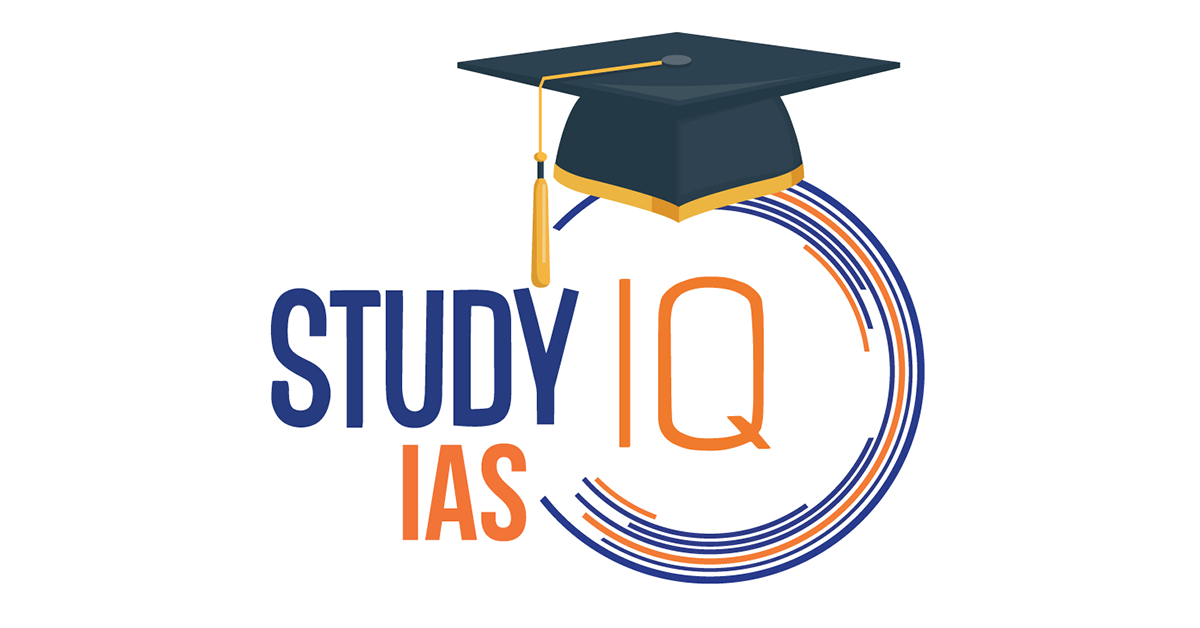
 Buddhism History, Origin, Sect, Councils...
Buddhism History, Origin, Sect, Councils...
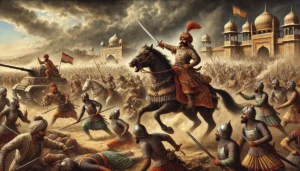 Rana Sanga: The Fearless Rajput King and...
Rana Sanga: The Fearless Rajput King and...
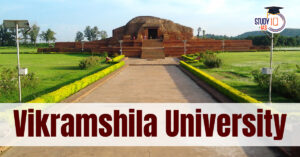 Vikramshila University Revival, Location...
Vikramshila University Revival, Location...
